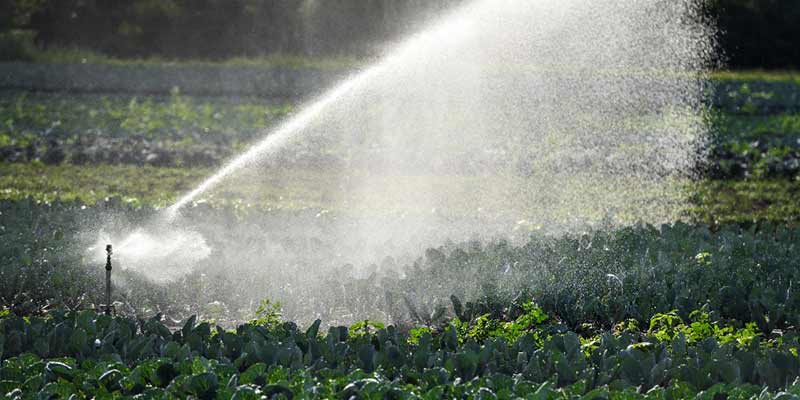- India
- Jul 18
Explainer / Micro irrigation
The water use efficiency of micro irrigation is as high as 80-95 per cent in comparison to only 30-50 per cent in conventional flood irrigation, Union Agriculture Minister Narendra Singh Tomar said in the Lok Sabha.
The net sown area in the country is 140,130 thousand hectares and net irrigated area is 68,385 thousand hectares. As per available information, the area covered under drip irrigation is 4,374.53 thousand hectares.
An impact evaluation study of the micro irrigation scheme was carried out by the department of agriculture cooperation and farmers’ welfare in 2014.
Major findings of the study:
* Irrigation cost is reduced by 20 per cent.
* Electricity consumption is reduced by about 31 per cent.
* Saving of fertilisers in the range of 7-42 per cent.
* Average productivity of fruits and vegetables increased by about 42.3 per cent and 52.8 per cent.
* Overall income enhancement of farmers in the range of 20-68 per cent.
What is micro irrigation?
Micro irrigation is a modern method of irrigation. By this method, water is irrigated through drippers, sprinklers, foggers and other emitters on the surface or subsurface of the land.
Advantages of micro irrigation
* Water saving and higher yield.
* High quality and increased fruit size.
* Suitable for all types of soil.
* Easy method of fertigation and chemigation.
* Savings in labour and field preparation cost.
Background
The Union government has been implementing a centrally sponsored scheme on micro irrigation with the objective to enhance water use efficiency in the agriculture sector by promoting appropriate technological interventions like drip and sprinkler irrigation and encourage farmers to use water saving and conservation technologies.
The scheme was launched by the department of agriculture and cooperation in January 2006. In June 2010, it was upscaled to National Mission on Micro Irrigation (NMMI), which continued till 2013-14. From April 1, 2014, NMMI was subsumed under the National Mission on Sustainable Agriculture (NMSA) and implemented as On Farm Water Management (OFWM) during 2014-15. The same is now being implemented as the ‘Per Drop More Crop’ component under the Pradhan Mantri Krishi Sinchayee Yojana (PMKSY) from 2015-16 onwards.
‘Improve water use efficiency’
Economic Survey 2018-19 suggests that “focus should shift from land productivity to irrigation water productivity. Devising policies to incentivise farmers to improve water use should become a national priority. Thrust should be on micro irrigation that can improve water use efficiency”.
According to the Asian Water Development Outlook, 2016, almost 89 per cent of groundwater extracted in India is used for irrigation and crops such as paddy and sugarcane consume more than 60 per cent of irrigation water.
“There is a major concern whether the present practice of groundwater use can be sustained as the depth of groundwater level continues to drop. The cropping pattern in India is highly skewed towards crops that are water-intensive. The incentive structure like MSP, heavily subsidised electricity, water and fertiliser have played a significant role in misalignment of crop pattern,” the survey said.
Highlighting the importance of bringing resource efficiency in smallholder agriculture, the survey enumerates several important factors and also lays down the main policy changes required.
These include increasing irrigation water productivity (IWP) by adopting improved methods of irrigation and irrigation technologies, increasing sustainability through organic and natural farming, economising the use of fertilisers and pesticides, improving infrastructure and access to markets and adopting appropriate technology for smallholder farms.
Pradhan Mantri Krishi Sinchayee Yojana
The Cabinet Committee on Economic Affairs gave its approval for the Pradhan Mantri Krishi Sinchayee Yojana (PMKSY) on July 1, 2015. The PMKSY has been formulated with the vision of extending the coverage of irrigation - ‘Har Khet Ko Pani’ (water to every field) - and improving water use efficiency - ‘More crop per drop’ - in a focused manner with end-to-end solution on source creation, distribution, management, field application and extension activities.
Objectives of PMKSY
* Achieve convergence of investments in irrigation at the field level (preparation of district-level and, if required, sub-district-level water use plans).
* Enhance the physical access of water on the farm and expand cultivable area under assured irrigation (Har Khet Ko Pani).
* Integration of water source, distribution and its efficient use, to make best use of water through appropriate technologies and practices.
* Improve farm water use efficiency to reduce wastage and increase availability both in duration and extent.
* Enhance the adoption of precision irrigation and other water-saving technologies (More Crop Per Drop).
* Enhance recharge of aquifers and introduce sustainable water conservation practices.
* Ensure the integrated development of rainfed areas using the watershed approach towards soil and water conservation, regeneration of groundwater, arresting runoff, providing livelihood options and other NRM activities.
* Promote extension activities relating to water harvesting, water management and crop alignment for farmers and grassroot-level field functionaries.
* Explore the feasibility of reusing treated municipal wastewater for peri-urban agriculture.
* Attract greater private investments in irrigation.

